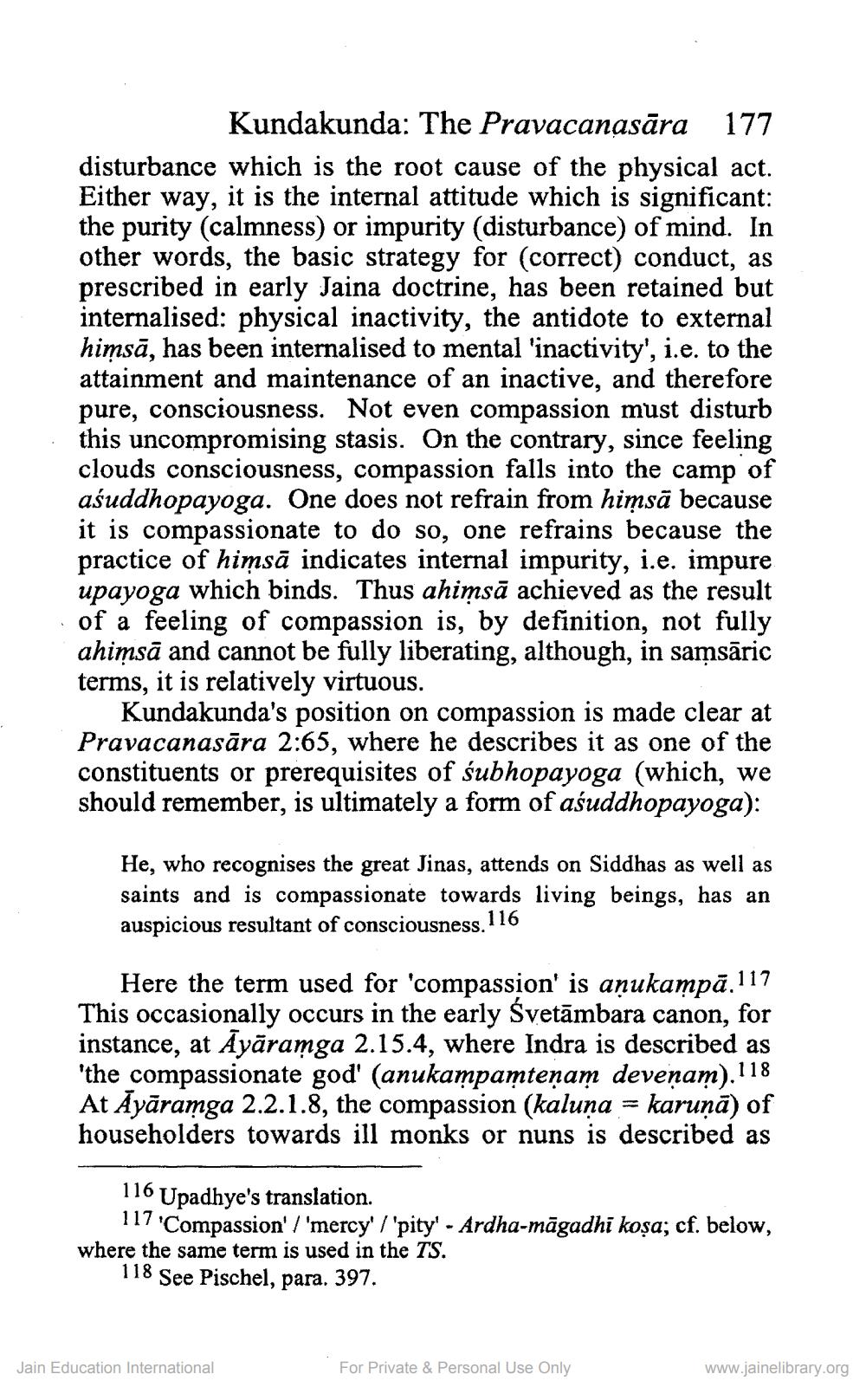________________
Kundakunda: The Pravacanasāra 177 disturbance which is the root cause of the physical act. Either way, it is the internal attitude which is significant: the purity (calmness) or impurity (disturbance) of mind. In other words, the basic strategy for (correct) conduct, as prescribed in early Jaina doctrine, has been retained but internalised: physical inactivity, the antidote to external himsā, has been internalised to mental 'inactivity', i.e. to the attainment and maintenance of an inactive, and therefore pure, consciousness. Not even compassion must disturb this uncompromising stasis. On the contrary, since feeling clouds consciousness, compassion falls into the camp of aśuddhopayoga. One does not refrain from himsā because it is compassionate to do so, one refrains because the practice of himsā indicates internal impurity, i.e. impure upayoga which binds. Thus ahimsā achieved as the result · of a feeling of compassion is, by definition, not fully ahiņsā and cannot be fully liberating, although, in samsāric terms, it is relatively virtuous.
Kundakunda's position on compassion is made clear at Pravacanasāra 2:65, where he describes it as one of the constituents or prerequisites of śubhopayoga (which, we should remember, is ultimately a form of aśuddhopayoga):
He, who recognises the great Jinas, attends on Siddhas as well as saints and is compassionate towards living beings, has an auspicious resultant of consciousness. 116
Here the term used for 'compassion' is aņukampā.117 This occasionally occurs in the early Svetāmbara canon, for instance, at Āyāramga 2.15.4, where Indra is described as 'the compassionate god' (anukampaņteņam deveņam).118 At Ayāramga 2.2.1.8, the compassion (kaluna = karunā) of householders towards ill monks or nuns is described as
116 Upadhye's translation.
117 Compassion' / 'mercy' / 'pity' - Ardha-māgadhi koşa; cf. below, where the same term is used in the TS.
118 See Pischel, para. 397.
Jain Education International
For Private & Personal Use Only
www.jainelibrary.org




